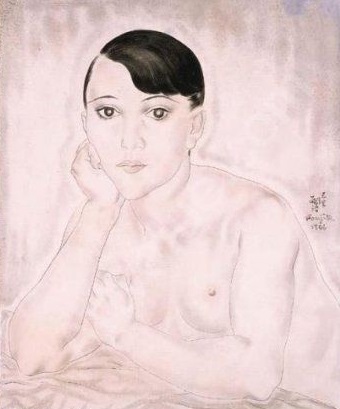
Master of the line
A Japanese painter proud of his origins, Foujita drew his inspiration from the classical allegorical compositions of the great European masters such as Michelangelo, Poussin and Velasquez, as well as from Rodin’s sculpture. He created a singular universe, on the border between East and West.
In 1928, at a time of international success, Foujita abandoned his projects to create a monumental work consisting of four canvases, each measuring 3 meters by 3 meters. These works marked the culmination of his research, as he wrote to his wife Youki, to whom he entrusted them in October 1931 before leaving on a world tour.
These four canvases, admirable for their virtuosity and delicacy, are painted on a chalky white background obtained using a highly confidential technique[1]. The material, smooth and satiny, offers a rare transparency. Yet the subject matter is obscure, and the titles chosen by Foujita – Grande Composition and Combats – do not make it easy to understand. These paintings, forming a set of two diptychs, offer a vision of two opposing universes that seem to respond to each other: one, imbued with a certain lascivious gentleness, echoes the other, tumultuous and violent.
A study of Foujita’s preparatory drawings reveals that the artist drew an initial, highly detailed sketch of each figure on paper, then reproduced them several times on tracing paper, to the point of being able to draw them from memory. This work was directly inspired by the Japanese art of tsukuri-e, “constructed drawing”, and enabled the artist to rediscover the purity of the drawing and more easily reproduce his individual motifs freehand.
These canvases were admired by all, to the point where some critics described Foujita as a “magician”. Exhibited in 1928 at the Galerie Bernheim and later at the Musée de l’Orangerie, they have never been re-exhibited in Paris since. Long thought lost, they were donated in 1992 by his last wife, Kimiyo Foujita, to the Conseil départemental de l’Essonne, which carried out a long restoration campaign before exhibiting them at the Domaine de Chamarande in 2007-2008.
[1] « Nyuhakushoku » ou « milky whiteness », technique jealously guarded by Foujita




